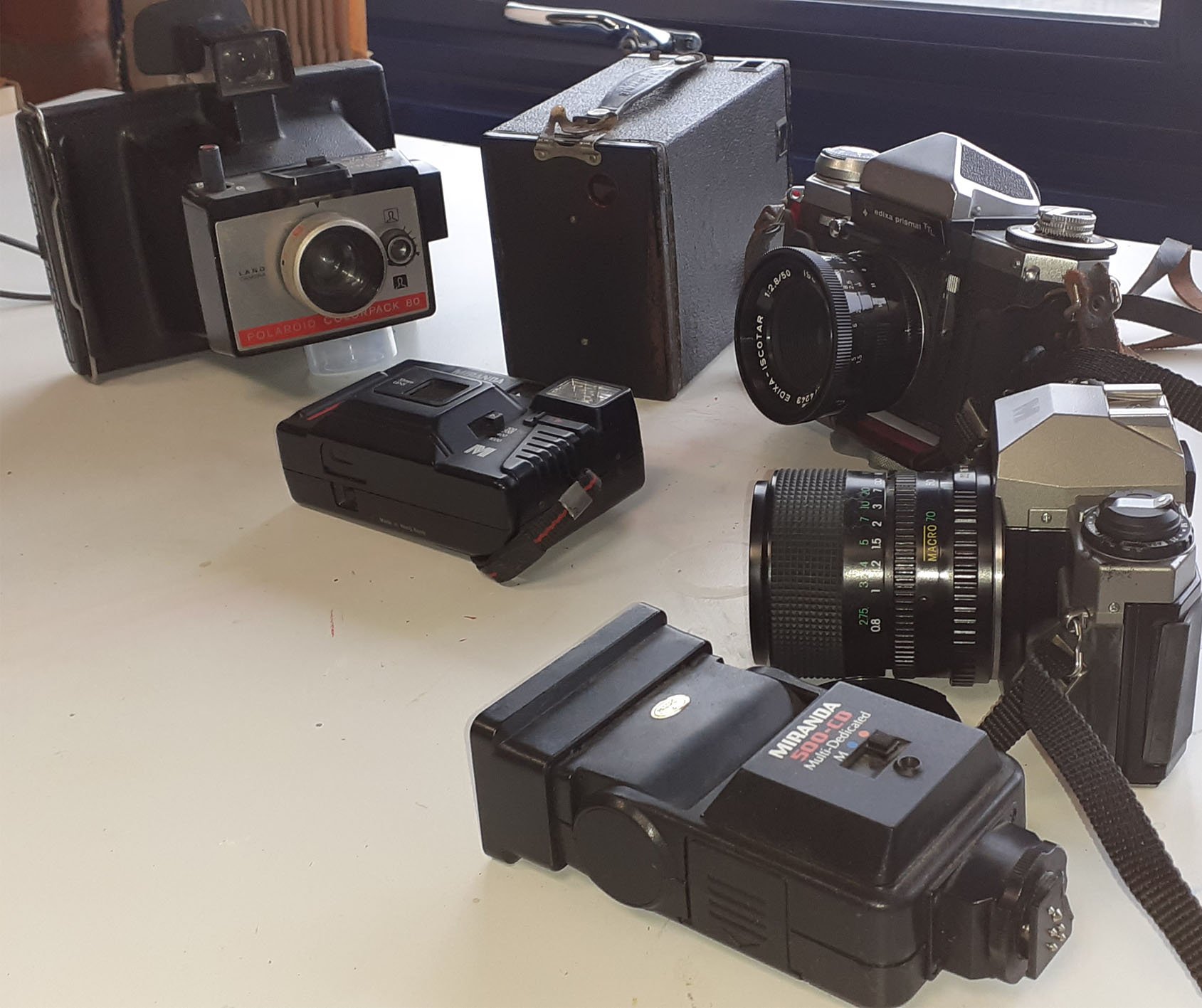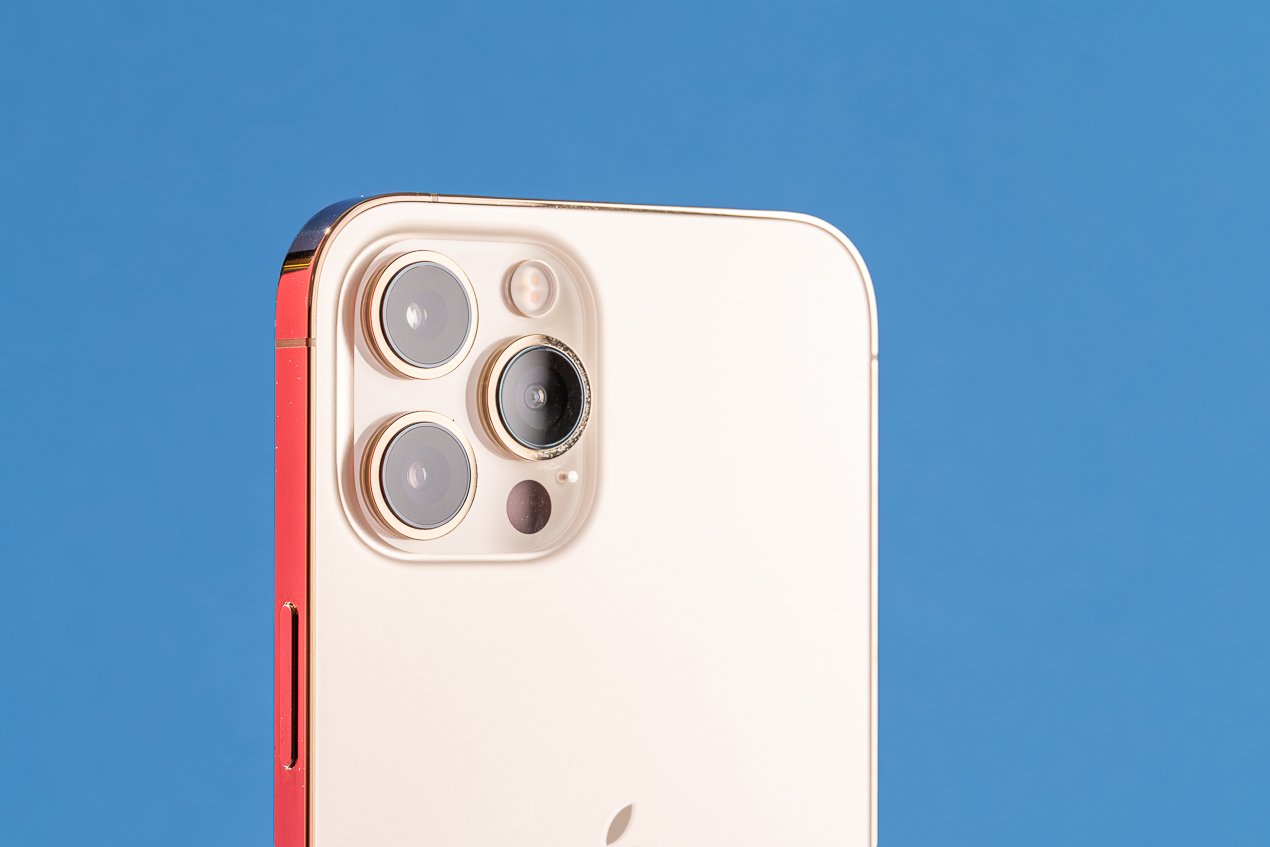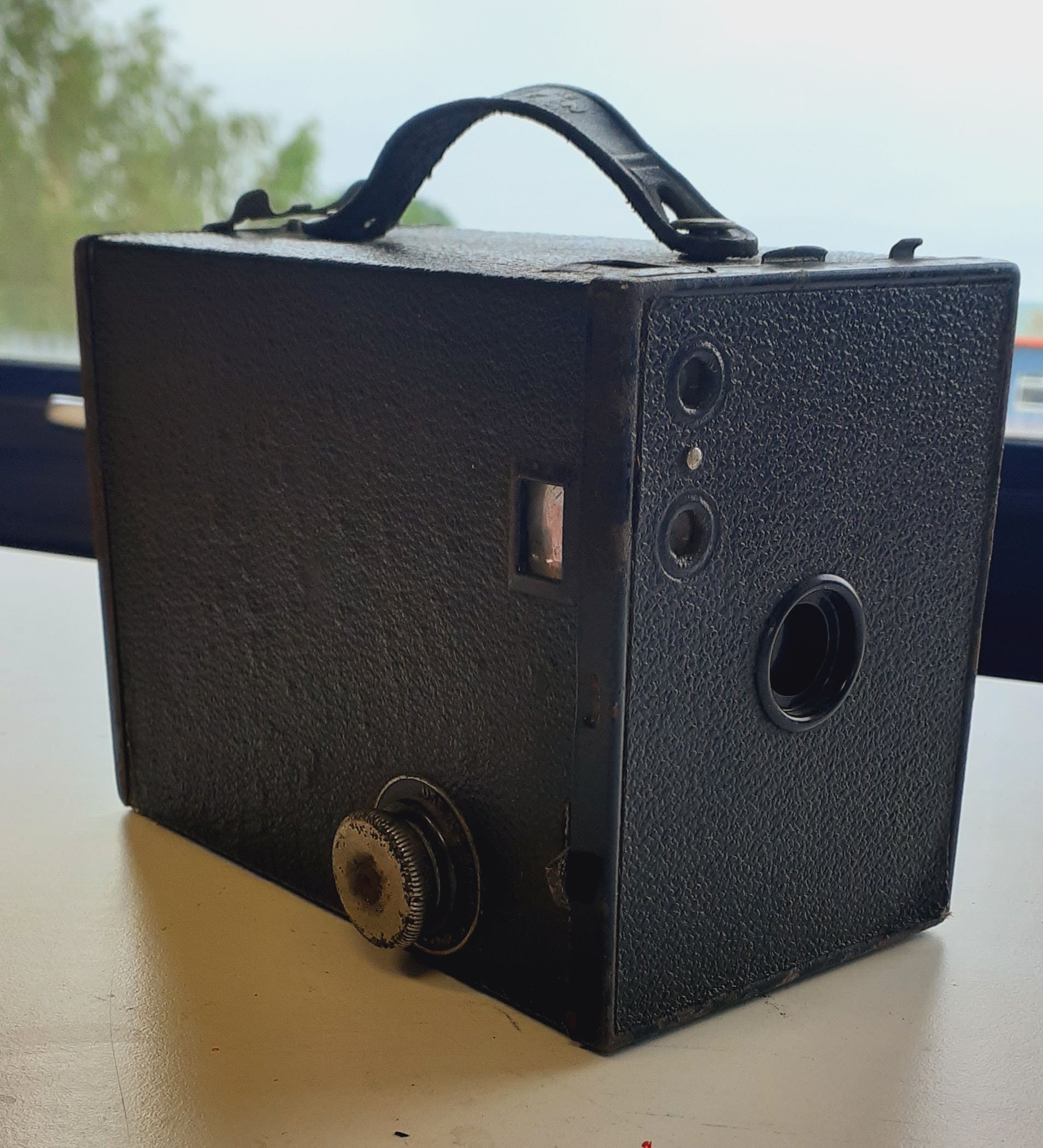
 Let’s celebrate National Camera Day on June 29 2023. Taking a photo has never been easier and more popular – Mobile phones have made getting a snap of a time and place in an instant and printing and editing make taking a photo a very easy instant experience.
Let’s celebrate National Camera Day on June 29 2023. Taking a photo has never been easier and more popular – Mobile phones have made getting a snap of a time and place in an instant and printing and editing make taking a photo a very easy instant experience.
We no longer need stacks of photo albums with cellulose photos which we had to wait a week for – or if we were impatient, pay extra for a quicker service. I remember packs of photos landing on the doorstep from a send-away photo developing service.
After being given my first camera at the age of 7, an instant Polaroid Colourpack 80, with a Flash cube, and where you had to pull out a single photo from the side of the camera, wave it around as it developed. I was hooked and still have some rolls of film in the fridge which for some very odd reason I have been reluctant to throw away. My first real camera, which I saved up all my birthday and Christmas money for and spent a lot of time choosing the right one, used rolls of film and now sits next to my 1920 Kodak No.2 Box Brownie!
With filters and apertures and shutter speeds taking a photo was a challenge and you could not edit or amend instantly like you can with digital technology nowadays, and overexposed, half a head, double exposure when you forgot to wind on the film etc were all the risk of taking a picture.
 The ability to capture an instant in time, and history, a person’s image or the beauty of a landscape has moved on with the digital camera and even a smartphone – though I still prefer a camera and wherever I go will grab my bag of cameras, small digital camera and the in-between camera and stack of batteries, just in case I see something.
The ability to capture an instant in time, and history, a person’s image or the beauty of a landscape has moved on with the digital camera and even a smartphone – though I still prefer a camera and wherever I go will grab my bag of cameras, small digital camera and the in-between camera and stack of batteries, just in case I see something.
Then back home, downloading, editing and deleting the ones which were not quite right. I have folders of these photos stored on my computer which are a constant inspiration for paintings and drawings.
 Early development
Early development
A centuries-old device called a Camera Obscura or Pinhole camera was a forerunner of the camera we know today. This was a simple optical device which projected an image through a tiny pinhole. In its simplest form, a camera obscura is a lightproof, dark room with a small hole in one wall. When it is bright outside, light enters through the hole and projects an inverted image of the outside world onto the wall opposite the hole. Initially taking up whole rooms, they would be developed into a portable version with the addition of a lens meant that the box could be moved to provide focus and a mirror would rotate the projected image so that it was the right way round and the right way up.
Though able to project an image the Camera Obscura was not able to capture and store the image and this was the next step in the development of the camera.
Thought knows for centuries the effects of chemicals such as silver salts darken when exposed to sunlight through experimentation by the 17th century, German, Johann Heinrich Schulze was able to capture a silhouette image on a chemical plate coated with silver nitrates, though these were not permanent as the image would darken when exposed to light. Using this principle the inventor Thomas Wedgwood, son of the founder of the Wedgwood company, was able to create simple images or photograms ( cameraless images ) using leaves and insects placed on ceramic pots coated with a light-sensitive chemical such as silver nitrate, which was then exposed to the light, leaves a lighten silhouette as the areas exposed to the light darkened. The images were not permanent and when exposed to the light would allow for the whole area to darken, unless kept in the dark but this was a step in capturing an image on to a surface.
By 1816, Joseph Nicéphore Niépce succeeded in capturing images on paper coated with silver chloride , however, these “sun print” images took 8 hours for exposure and was not permanent and later faded.
Continuing to work on the principle by 1826 Niépce using a using a sliding wooden box camera created by Charles and Vincent Chevalier was able to capture a photographic image with the camera device. The earliest known surviving photograph is displayed at the University of Texas at Austin.
View from the Window at Le Gras (Point de vue du Gras), showing buildings and surrounding countryside is thought to be the earliest surviving photograph was created this way by Niépce using the camera box loaded with a rectangular sheet of polished pewter, thinly coated with light-sensitive bitumen, the pewter plate was attached to the back of the wooden box and exposed the plate through the lens for several days. The photosensitive bitumen hardens in the brightly lit areas and the less lit areas remained soluble and could be removed making a permanent image known as a Direct Positive image.
Taken 1826

Enhanced version by Historians Helmut Gernsheim and his wife, Alison Gernsheim

William Henry Fox Talbot
As an artist and scientist William Henry Fox Talbot (1800-1877) used a portable Camera obscura to aid drawing and wanted a more permanent solution, working on a similar principle used earlier by Niépce and Wedgwood, Fox Talbot started to experiment eventually with a sheet of paper coated, salt, brushes and a solution of silver nitrate. He found that the sun would darken the exposed areas. A further coating of salt would impede further darkening. Using this principle, he was able to use pressed leaves onto the coated paper. The paper which was not exposed to the sun stayed white and the exposed area darkened leaving what Fox Talbot referred to as a “photogenic drawing”.

It was Fox Talbot who is also credited for capturing what is considered to be the earliest known surviving example of a stabilised photographic negative on paper.
Taken in 1834 “Latticed Window at Lacock Abby, survives today as Fox Talbot was able to make the image more permanent.
Fox Talbot was not the first to publish his results and by 1837, Inventor Louis-Jacques-Mandé Daguerre (1787-1851), in partnership with Niépce, until his death in 1833, was the first to publicly announce a successful method of capturing images and, went on to develop a daguerreotype image which was formed on a highly polished silver–plated copper sheet with a coating of light-sensitive Silver iodide, which was the first publicly available photographic process. The daguerreotype process only allows one image to be created at a time and multiple images needed to be produced, but taking multiple photographs on separate plates. Fox Talbot continued to develop his Photographic techniques on paper and would go on to introduce by 1841 produce a Calotype negative which would enable a large number of positive prints. Eventually, Fox Talbot would develop three primary elements of photography, developing, Fixing and printing.

Invented in 1839 by Daguerre , the first commercial daguerreotype photographic cameras were developed for manufacture, by Alphonse Giroux in 1839. These cameras required long exposure times but had been reduced to 5-30 minutes and were expensive to purchase. These plate cameras continued to be used for the high-quality clear images they produced into the 1900s mainly for portrait photography.

Pioneered by George Eastman the first celluloid roll film camera appeared by 1888-1889 alongside his camera – a simple fixed focus box camera preloaded with film which needed to be sent back to the factory for developing which he called the “Kodak”. By 1900 the Box Brownie was a simple inexpensive camera for the mass market and remained a popular type of camera up to the 1960s.
Through the 1920s the development of popular and accessible 35mm film cameras like Leica, lead to SLR (single-lens reflex and TLR (Twin -lens reflex) versions, manual and autofocus, instant, digital and now accessing a camera feature is as easy as reaching into your bag or pocket and pulling out your smartphone.
Why not then turn your photo into a painting?
A recent tip into my local town of Newark on Trent, Nottinghamshire, UK, proved a colourful opportunity for taking photographs. Hundreds of bright and colourful umbrellas have been installed by Newark Creates, the ADHD Foundation and some local schools as part of a package of measures to celebrate and raise awareness of neurodiversity and they are striking against the bright blue sky, Providing Inspiration for this watercolour painting which I had fun creating. This detailed piece is a little different to my usually style as I am usually impatient and like to get where I usually finished a painting or drawing in one session. This time I have this on my drawing board and would keep working on areas for short periods at a time. No rush just gently building up the colours, which I found relaxing and would set tasks to finish before allowing myself a little time on the painting.

I hope this has inspired you to get your camera or phone out.